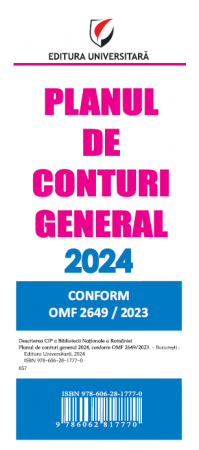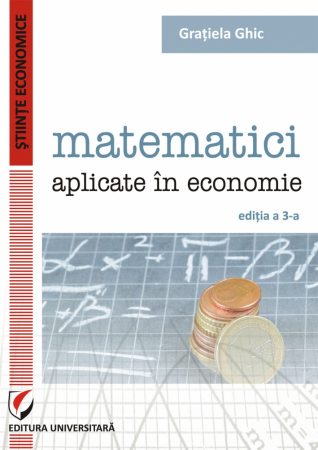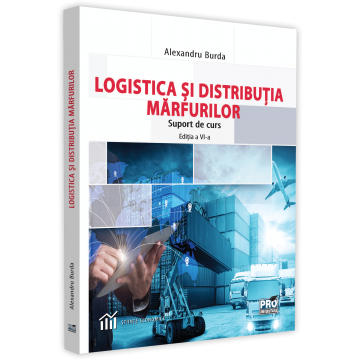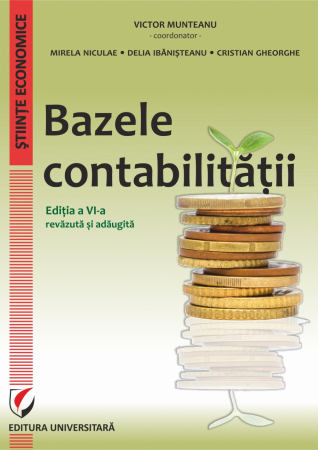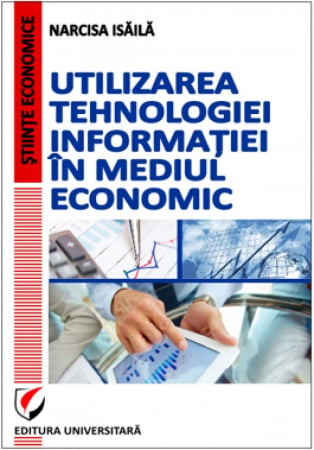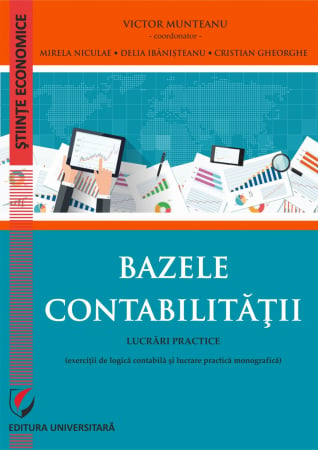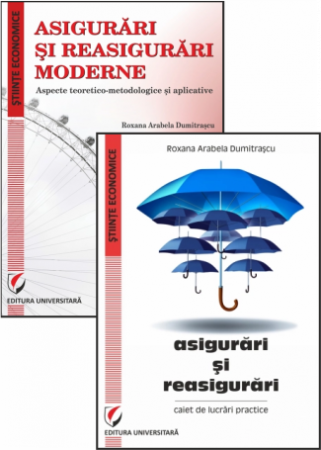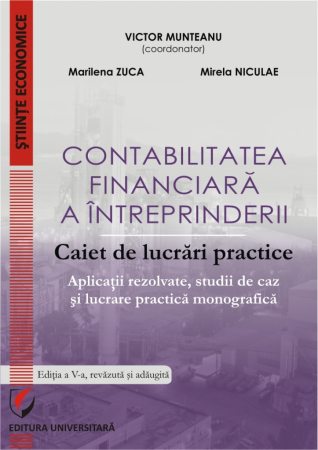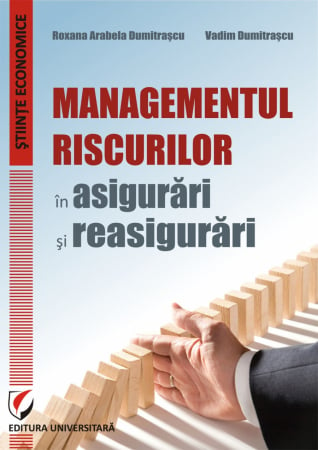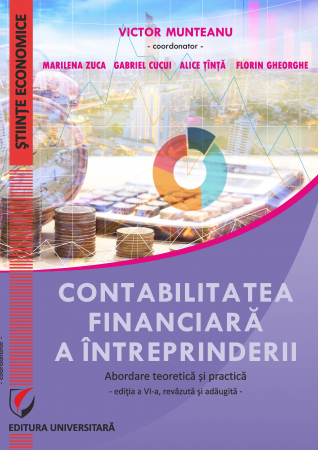Manuscript proposals: [email protected] / 0745 204 115 //// Tracking orders Individuals / Sales: 0745 200 357 / Orders Legal entities: 0721 722 783
Publisher: Editura Universitară
Author: Sorinel-Ionel Bucur
ISBN: 978-606-28-1161-7
DOI: https://doi.org/10.5682/9786062811617
Publisher year: 2020
Edition: I
Pages: 138
Product Code:
9786062811617
Do you need help?
0745 200 357
- Description
- Download (1)
- Authors
- Content
- More details
- Reviews (0)
Structured in five chapters, one dedicated to conclusions and proposals, we believe that this paper, both through theoretical documentation and analysis can complete the existing study fund and can provide all factors involved in implementing economic and social policy measures relevant information at the level of the analyzed localities. Also, the way of approaching this issue can be a starting point in conducting similar analyzes at the level of other local rural communities.
The attempt to build alternatives for the development of the rural space is hit, however, most of the times by the limited informational support at the level of the rural community. Thus, national statistics provide, with few exceptions, aggregate information either at the level of areas of residence or at the county level, which prevents the realization of an extremely rigorous analysis on each rural community.
Moreover, the time periods for which statistical data are available are different, which in some cases requires their adjustment.
The national information support is also complemented by statistics at Community level which provide aggregated information, in some cases up to NUTS 3 level. However, based on the available information, working criteria and assumptions can be established, as a basis for identifying alternatives for local development, starting mainly from the current state of economic, social and environmental indicators.
The combination of established statistical working methods (such as comparisons, structures, dynamics, etc.) with those related to the transformation of primary indicators into aggregate indicators, based on models found in the literature, come to bring an extra rigor and clarity of results. obtained. Moreover, the option to use the predominantly tabular representation of the obtained results lies in the need to capture the overall evolution of the rural area of the South Muntenia region, with visual and complete highlighting of the analyzed data series.
The attempt to build alternatives for the development of the rural space is hit, however, most of the times by the limited informational support at the level of the rural community. Thus, national statistics provide, with few exceptions, aggregate information either at the level of areas of residence or at the county level, which prevents the realization of an extremely rigorous analysis on each rural community.
Moreover, the time periods for which statistical data are available are different, which in some cases requires their adjustment.
The national information support is also complemented by statistics at Community level which provide aggregated information, in some cases up to NUTS 3 level. However, based on the available information, working criteria and assumptions can be established, as a basis for identifying alternatives for local development, starting mainly from the current state of economic, social and environmental indicators.
The combination of established statistical working methods (such as comparisons, structures, dynamics, etc.) with those related to the transformation of primary indicators into aggregate indicators, based on models found in the literature, come to bring an extra rigor and clarity of results. obtained. Moreover, the option to use the predominantly tabular representation of the obtained results lies in the need to capture the overall evolution of the rural area of the South Muntenia region, with visual and complete highlighting of the analyzed data series.
-
Complex sustainable development in the Romanian rural area. Case study: South-Muntenia Region
Download
SORINEL-IONEL BUCUR
INTRODUCTION / 7
CHAPTER I. RURALITY, SUSTAINABILITY DURABILITY AND COMPLEXITY - CONCEPTUAL APPROACHES / 9
1.1. Conceptual approaches to rural space - size, functions and characteristics / 9
1.2. Durability, sustainability and complexity - conceptual approaches / 12
1.3. The complex development of the rural space - conceptual and methodological approaches / 15
1.4. Considerations regarding the approach of the sustainability and sustainability of agriculture as a basic activity of the rural space / 17
CHAPTER II. CONSIDERATIONS REGARDING THE POSITION OF THE SOUTH MUNTENIA REGION IN THE NATIONAL ECONOMY - INTERREGIONAL DEVELOPMENTS AND GAPS / 20
CHAPTER III. RURAL AREA OF THE SOUTH-MOUNTAIN REGION - INTRAREGIONAL CHARACTERISTICS AND STRUCTURAL EVOLUTION / 28
3.1. Spatial distribution of the rural area specific to the South-Muntenia region / 28
3.2. Systemic evolutions of the indicators at the level of the South-Muntenia region / 50
3.2.1. Demographic system / 50
3.2.2. The social system / 61
3.2.2.1. The educational system / 62
3.2.2.2. The sanitary system / 66
3.2.2.3. The urban system / 69
3.2.3. The cultural system of the South-Muntenia region / 73
3.2.3.1. Primary indicators of the cultural system - evolution and intra - regional disparities / 73
3.2.3.2. The cultural sustainability of the rural space in the South-Muntenia region / 74
3.2.4. Evolutions and gaps of the economic system of the South-Muntenia region / 76
3.3. Sustainability of rural areas - an approach in terms of ecological footprint / 84
3.3.1. Some considerations regarding the concept of ecological footprint / 84
3.3.2. Ecological footprint - estimation methods at the level of the South-Muntenia region / 85
CHAPTER IV. CRITERIA FOR THE COMPLEX DEVELOPMENT OF THE RURAL AREA IN THE SOUTH MUNTENIA REGION / 94
4.1. Gaps, disparities and criteria for the complex development of the rural area in the South-Muntenia region / 94
4.1.1. Considerations regarding the genesis of the economic and social disparities and disparities in the rural area / 95
4.1.2. Identifying some criteria for the complex development of the rural space / 95
4.2. Maximizing agricultural production a feasible criterion for the complex development of the rural area of the South-Muntenia region / 96
4.2.1. Landmarks and methodological tools of the complex development of the rural space of the South-Muntenia region / 96
4.2.2. Measurement of the gaps in the area of the South-Muntenia region based on the selected criteria / 97
4.2.3. Multicriteria distribution in space and time of the counties in the South-Muntenia region / 98
4.2.4. Alternative hypotheses of corrective intervention in the agricultural development of the communities of the South-Muntenia region / 102
CHAPTER V. COMPLEX DEVELOPMENT ALTERNATIVES IN THE SOUTH-MOUNTAIN REGION - PROSPECTIVE EVALUATIONS / 105
5.1. Preliminary points / 105
5.2. Working hypotheses and operational criteria / 105
5.3. Development alternatives and prospective evolutions / 108
5.4. Strategies and development programs of the South-Muntenia region / 112
CHAPTER VI. CONCLUSIONS AND PROPOSALS / 119
ANNEXES / 127
BIBLIOGRAPHY / 133
CHAPTER I. RURALITY, SUSTAINABILITY DURABILITY AND COMPLEXITY - CONCEPTUAL APPROACHES / 9
1.1. Conceptual approaches to rural space - size, functions and characteristics / 9
1.2. Durability, sustainability and complexity - conceptual approaches / 12
1.3. The complex development of the rural space - conceptual and methodological approaches / 15
1.4. Considerations regarding the approach of the sustainability and sustainability of agriculture as a basic activity of the rural space / 17
CHAPTER II. CONSIDERATIONS REGARDING THE POSITION OF THE SOUTH MUNTENIA REGION IN THE NATIONAL ECONOMY - INTERREGIONAL DEVELOPMENTS AND GAPS / 20
CHAPTER III. RURAL AREA OF THE SOUTH-MOUNTAIN REGION - INTRAREGIONAL CHARACTERISTICS AND STRUCTURAL EVOLUTION / 28
3.1. Spatial distribution of the rural area specific to the South-Muntenia region / 28
3.2. Systemic evolutions of the indicators at the level of the South-Muntenia region / 50
3.2.1. Demographic system / 50
3.2.2. The social system / 61
3.2.2.1. The educational system / 62
3.2.2.2. The sanitary system / 66
3.2.2.3. The urban system / 69
3.2.3. The cultural system of the South-Muntenia region / 73
3.2.3.1. Primary indicators of the cultural system - evolution and intra - regional disparities / 73
3.2.3.2. The cultural sustainability of the rural space in the South-Muntenia region / 74
3.2.4. Evolutions and gaps of the economic system of the South-Muntenia region / 76
3.3. Sustainability of rural areas - an approach in terms of ecological footprint / 84
3.3.1. Some considerations regarding the concept of ecological footprint / 84
3.3.2. Ecological footprint - estimation methods at the level of the South-Muntenia region / 85
CHAPTER IV. CRITERIA FOR THE COMPLEX DEVELOPMENT OF THE RURAL AREA IN THE SOUTH MUNTENIA REGION / 94
4.1. Gaps, disparities and criteria for the complex development of the rural area in the South-Muntenia region / 94
4.1.1. Considerations regarding the genesis of the economic and social disparities and disparities in the rural area / 95
4.1.2. Identifying some criteria for the complex development of the rural space / 95
4.2. Maximizing agricultural production a feasible criterion for the complex development of the rural area of the South-Muntenia region / 96
4.2.1. Landmarks and methodological tools of the complex development of the rural space of the South-Muntenia region / 96
4.2.2. Measurement of the gaps in the area of the South-Muntenia region based on the selected criteria / 97
4.2.3. Multicriteria distribution in space and time of the counties in the South-Muntenia region / 98
4.2.4. Alternative hypotheses of corrective intervention in the agricultural development of the communities of the South-Muntenia region / 102
CHAPTER V. COMPLEX DEVELOPMENT ALTERNATIVES IN THE SOUTH-MOUNTAIN REGION - PROSPECTIVE EVALUATIONS / 105
5.1. Preliminary points / 105
5.2. Working hypotheses and operational criteria / 105
5.3. Development alternatives and prospective evolutions / 108
5.4. Strategies and development programs of the South-Muntenia region / 112
CHAPTER VI. CONCLUSIONS AND PROPOSALS / 119
ANNEXES / 127
BIBLIOGRAPHY / 133
Speaking about the rural space, either at national or local level (regional or community) we can not fail to discuss its importance not only in terms of spatial dimension, but especially the specific characteristics of each area. .
The issue of rural space has been and still is the subject of heated discussions at national level, but especially at community level, the differences between the two levels - national versus community - still remain significant, both in terms of economic performance generated by this area, but especially of the existing behavioral and cultural differences.
13 years after joining the European Union and 30 years since 1989, the Romanian rural area faces a series of dysfunctions, related either to the requirements of permanent adaptation to European rigors, or to the slow implementation of efficient development programs, correlated, in some cases, with the resistance to change of the inhabitants of rural areas, the resistance coming, in most cases, from the specific behavioral models, but also from the awareness of the effect of the measures applied by the decision-makers.
The choice of this theme, with applicability at the regional level, was given by the fact that the South Muntenia region is one of the largest regions of Romania, being, compared to other development regions, both in terms of economic performance and and structural dysfunctions, on the second or third position in the national economy.
The importance of this work is given by the certainty that the complex sustainable development of the rural area of this region, including agriculture and other branches of the national economy, will have to be done in accordance with global values, traditions and perceptions (economic, social, ecological , cultural, etc.).
Viewed in a more or less close perspective, uncertain still considering the "performance" and "efficiency" of the indicator systems that characterize the rural area of the South Muntenia region, the complex sustainable development can be seen as a framework scheme to address the surrounding reality. , but also in terms of the relationship between human society and the environment, as a balance between the economic and socially legitimate needs of the population and the environment.
In the context of the above, the purpose of this paper is to identify local development alternatives, developed based on operational criteria, based on public information support. The motivation for establishing this objective lies in the coexistence, of regional level, of some counties with different characteristics, both from the point of view of the degree of rurality, of the geographical location, but also of the nature of the activities carried out (mono or several activities).
Specifically, in achieving the aggregate objective of the paper, the following were considered:
• Conceptual aspects regarding the rural space and its complex development;
• The spatial dimension of the rural space of the South Muntenia region;
• Evolutions and structural changes occurred at the level of the main component systems;
• Identifying criteria and alternatives for sustainable development.
Structured in five chapters, one dedicated to conclusions and proposals, we believe that this paper, both through theoretical documentation and analysis can complete the existing study fund and can provide all factors involved in implementing economic and social policy measures relevant information at the level of the analyzed localities. Also, the way of approaching this issue can be a starting point in conducting similar analyzes at the level of other local rural communities.
The attempt to build alternatives for the development of the rural space is hit, however, most of the times by the limited informational support at the level of the rural community. Thus, national statistics provide, with few exceptions, aggregate information either at the level of areas of residence or at the county level, which prevents the realization of an extremely rigorous analysis on each rural community.
Moreover, the time periods for which statistical data are available are different, which in some cases requires their adjustment.
The national information support is also complemented by statistics at Community level which provide aggregated information, in some cases up to NUTS 3 level. However, based on the available information, working criteria and assumptions can be established, as a basis for identifying alternatives for local development, starting mainly from the current state of economic, social and environmental indicators.
Combining established statistical working methods (such as comparisons, structures, dynamics, etc.) with those due to the transformation of some primary indicators into aggregate indicators, based on some models found in the specialized literature, they come to bring an extra rigor and clarity of the obtained results. Moreover, the option to use the predominantly tabular representation of the obtained results lies in the need to capture the overall evolution of the rural area of the South Muntenia region, with visual and complete highlighting of the analyzed data series.
The issue of rural space has been and still is the subject of heated discussions at national level, but especially at community level, the differences between the two levels - national versus community - still remain significant, both in terms of economic performance generated by this area, but especially of the existing behavioral and cultural differences.
13 years after joining the European Union and 30 years since 1989, the Romanian rural area faces a series of dysfunctions, related either to the requirements of permanent adaptation to European rigors, or to the slow implementation of efficient development programs, correlated, in some cases, with the resistance to change of the inhabitants of rural areas, the resistance coming, in most cases, from the specific behavioral models, but also from the awareness of the effect of the measures applied by the decision-makers.
The choice of this theme, with applicability at the regional level, was given by the fact that the South Muntenia region is one of the largest regions of Romania, being, compared to other development regions, both in terms of economic performance and and structural dysfunctions, on the second or third position in the national economy.
The importance of this work is given by the certainty that the complex sustainable development of the rural area of this region, including agriculture and other branches of the national economy, will have to be done in accordance with global values, traditions and perceptions (economic, social, ecological , cultural, etc.).
Viewed in a more or less close perspective, uncertain still considering the "performance" and "efficiency" of the indicator systems that characterize the rural area of the South Muntenia region, the complex sustainable development can be seen as a framework scheme to address the surrounding reality. , but also in terms of the relationship between human society and the environment, as a balance between the economic and socially legitimate needs of the population and the environment.
In the context of the above, the purpose of this paper is to identify local development alternatives, developed based on operational criteria, based on public information support. The motivation for establishing this objective lies in the coexistence, of regional level, of some counties with different characteristics, both from the point of view of the degree of rurality, of the geographical location, but also of the nature of the activities carried out (mono or several activities).
Specifically, in achieving the aggregate objective of the paper, the following were considered:
• Conceptual aspects regarding the rural space and its complex development;
• The spatial dimension of the rural space of the South Muntenia region;
• Evolutions and structural changes occurred at the level of the main component systems;
• Identifying criteria and alternatives for sustainable development.
Structured in five chapters, one dedicated to conclusions and proposals, we believe that this paper, both through theoretical documentation and analysis can complete the existing study fund and can provide all factors involved in implementing economic and social policy measures relevant information at the level of the analyzed localities. Also, the way of approaching this issue can be a starting point in conducting similar analyzes at the level of other local rural communities.
The attempt to build alternatives for the development of the rural space is hit, however, most of the times by the limited informational support at the level of the rural community. Thus, national statistics provide, with few exceptions, aggregate information either at the level of areas of residence or at the county level, which prevents the realization of an extremely rigorous analysis on each rural community.
Moreover, the time periods for which statistical data are available are different, which in some cases requires their adjustment.
The national information support is also complemented by statistics at Community level which provide aggregated information, in some cases up to NUTS 3 level. However, based on the available information, working criteria and assumptions can be established, as a basis for identifying alternatives for local development, starting mainly from the current state of economic, social and environmental indicators.
Combining established statistical working methods (such as comparisons, structures, dynamics, etc.) with those due to the transformation of some primary indicators into aggregate indicators, based on some models found in the specialized literature, they come to bring an extra rigor and clarity of the obtained results. Moreover, the option to use the predominantly tabular representation of the obtained results lies in the need to capture the overall evolution of the rural area of the South Muntenia region, with visual and complete highlighting of the analyzed data series.
If you want to express your opinion about this product you can add a review.
write a review

6359.png)
![Complex Sustainable Development in the Romanian Rural Area. Case Study: South-Muntenia Region [1] Complex Sustainable Development in the Romanian Rural Area. Case Study: South-Muntenia Region [1]](https://gomagcdn.ro/domains/editurauniversitara.ro/files/product/large/Bucur-Sorinel_Dezv-durabila-in-spatiul-rural-rom_BT-2985-2604.jpg)
